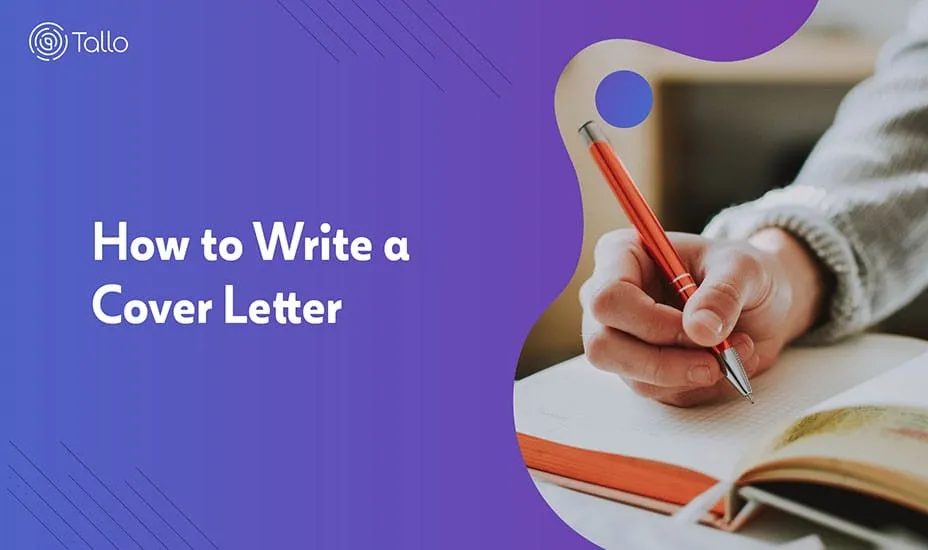What is a Cover Letter
A cover letter is a one-page document you submit with your resume when applying for a job. It serves as a personal introduction, allowing you to elaborate on your skills and experiences, and explain why you’re a good fit for the role and the company. Unlike a resume, which provides a factual summary of your qualifications, a cover letter allows you to showcase your personality, express your interest, and demonstrate your communication skills. It’s your chance to make a strong first impression and persuade the hiring manager to read your resume.
Why is a Cover Letter Important
In today’s competitive job market, a well-crafted cover letter can significantly increase your chances of landing an interview. It gives you the opportunity to highlight your most relevant qualifications and tailor your application to the specific job and company. Many hiring managers consider cover letters essential, as they provide insights into your communication style, writing abilities, and genuine interest in the position. A compelling cover letter can set you apart from other applicants and make you a more attractive candidate.
The Purpose of a Cover Letter

The primary purpose of a cover letter is to introduce yourself to the hiring manager and express your interest in the job. It’s a chance to explain why you’re a great fit for the role and the company, and to highlight your most relevant skills and experiences. A cover letter should showcase your personality, enthusiasm, and communication skills, while also providing a brief overview of your qualifications. It should complement your resume, not simply reiterate it. The goal is to convince the reader to take a closer look at your resume and invite you for an interview.
Top 7 Tips for Writing an Effective Cover Letter
Research the Company and Role
Before you start writing, thoroughly research the company and the specific job you’re applying for. Understand the company’s mission, values, and culture, and identify the key requirements and responsibilities of the role. This research will allow you to tailor your cover letter to the specific needs of the employer, demonstrating that you’ve taken the time to learn about their business and understand what they’re looking for in a candidate. Mentioning specific company initiatives or projects can show your genuine interest and make a strong impression.
Highlight Relevant Skills and Experience

Focus on the skills and experiences that are most relevant to the job requirements. Don’t just list your qualifications; provide specific examples of how you’ve used those skills to achieve results. Use the job description as a guide to identify the key skills and experiences the employer is seeking and showcase how your background aligns with those needs. Quantify your achievements whenever possible, using numbers and data to demonstrate the impact of your work. This will help you stand out from other applicants.
Tailor Your Letter to Each Application
Avoid sending generic cover letters. Customize each letter to the specific job and company. This involves more than just changing the company name; it means adjusting the content to reflect the specific requirements of the role and the values of the organization. Show that you understand what the company is looking for and how you can contribute to their success. Personalization demonstrates your genuine interest and increases your chances of getting noticed.
Show, Don’t Tell
Instead of simply stating that you have certain skills, provide concrete examples that demonstrate those skills in action. For instance, instead of saying “I am a good communicator,” describe a situation where you effectively communicated with a team or resolved a conflict through clear communication. Use the STAR method (Situation, Task, Action, Result) to structure your examples and provide context for your accomplishments. Showing your skills through specific examples makes your claims more credible and memorable.
Use Action Verbs

Use strong action verbs to describe your accomplishments and responsibilities. Action verbs make your cover letter more dynamic and engaging, and they help to showcase your skills and achievements in a compelling way. Start your sentences with verbs like “managed,” “developed,” “implemented,” “achieved,” “led,” and “created.” This will make your cover letter more concise and action-oriented, highlighting your abilities and making you sound like a proactive candidate. Avoid passive voice and focus on what you’ve done.
Keep it Concise and Focused
Keep your cover letter to one page and focus on the most important information. Hiring managers often have limited time to review applications, so make sure your letter is easy to read and quickly conveys your key qualifications. Avoid unnecessary jargon or overly lengthy sentences. Get straight to the point, highlighting your relevant skills and experiences and explaining why you’re a good fit for the role. A clear and concise letter is more likely to capture the reader’s attention.
Proofread Carefully
Proofread your cover letter multiple times to catch any typos, grammatical errors, or inconsistencies. Errors can create a negative impression and undermine your credibility. Have a friend or colleague review your letter as well, as they may catch mistakes that you missed. Pay close attention to the details, ensuring that your letter is polished, professional, and error-free. A well-proofread cover letter demonstrates your attention to detail and commitment to quality.
Cover Letter Format and Structure

Header and Contact Information
Start your cover letter with a header that includes your name, address, phone number, and email address. Also, include the date and the hiring manager’s name (if you know it), title, and the company’s address. The header should be at the top of the page and formatted in a clear and professional manner. This provides the essential contact information for the recruiter to reach you if they are interested.
Greeting
Use a professional greeting, such as “Dear Mr./Ms./Mx. [Last Name],” or “Dear Hiring Manager.” If you’re unsure of the hiring manager’s name, you can use “Dear [Department Name] Hiring Team” or a similar professional salutation. Avoid generic greetings like “To Whom It May Concern.” Address the recipient directly and show that you’ve taken the time to identify the appropriate person. This adds a personal touch and increases the likelihood of a positive response.
Body Paragraphs

The body of your cover letter should consist of a few well-written paragraphs. Start with a brief introduction that states the position you’re applying for and how you learned about it. In the following paragraphs, highlight your most relevant skills and experiences, providing specific examples of your accomplishments. Explain why you’re a good fit for the role and the company. Demonstrate your knowledge of the company and its values. Keep the body concise and focused on the key points you want to convey.
Closing Paragraph
In your closing paragraph, reiterate your interest in the position and thank the hiring manager for their time and consideration. Express your enthusiasm for the opportunity and state that you look forward to hearing from them soon. Include a call to action, such as “I am eager to discuss my qualifications further in an interview.” End with a professional closing, such as “Sincerely” or “Best regards,” followed by your typed name.
Formatting Best Practices
Use a professional font, such as Times New Roman, Arial, or Calibri, in a size between 10 and 12 points. Use standard 1-inch margins and single-space your text. Use clear and concise language, avoiding jargon or overly complex sentences. Break up large blocks of text with short paragraphs and bullet points to improve readability. Ensure your letter is well-organized and easy to scan. Proofread carefully for any formatting errors.
Cover Letter Examples
Cover Letter for a Marketing Position
For a marketing position, your cover letter should emphasize your marketing skills, experience, and understanding of marketing principles. Highlight your successes in previous marketing roles, such as successful campaigns, increased brand awareness, or improved lead generation. Mention your experience with relevant marketing tools and technologies, and demonstrate your ability to analyze data and measure results. Show enthusiasm for the company’s marketing strategy and how you can contribute to its success.
Cover Letter for an Entry-Level Position
For an entry-level position, focus on your education, skills, and any relevant experience, such as internships or volunteer work. Highlight your eagerness to learn and your willingness to take on new challenges. Show enthusiasm for the company and the opportunity to start your career there. Even if you lack extensive work experience, you can still demonstrate your potential through your skills, education, and a strong desire to succeed.
Cover Letter for a Career Change
When making a career change, emphasize the transferable skills and experiences from your previous roles that are relevant to the new position. Explain why you’re making the career change and what motivates you to pursue this new path. Show how your skills and experiences align with the job requirements, and demonstrate your willingness to learn and adapt. Highlight any training or education you’ve undertaken to prepare for your career change. Frame your experience in a way that showcases your adaptability and enthusiasm.
Common Mistakes to Avoid
Generic Cover Letters
Avoid sending generic cover letters that could be sent to any company. Take the time to tailor your letter to each job and company. Generic letters show a lack of effort and a lack of genuine interest in the specific opportunity. Show that you understand the company’s values and how you can contribute. Personalizing your cover letter increases your chances of getting noticed and making a positive impression.
Typos and Grammatical Errors
Typos and grammatical errors can undermine your credibility and make you appear unprofessional. Always proofread your cover letter carefully, and have someone else review it as well. Errors can distract the reader from your qualifications and make a negative impression. A polished and error-free cover letter demonstrates your attention to detail and commitment to quality.
Lack of Enthusiasm
Show your enthusiasm for the job and the company. Express your genuine interest in the opportunity and explain why you’re excited about the prospect of joining their team. A cover letter is your chance to showcase your personality and express your passion for the role. Demonstrate your enthusiasm through your writing, and make it clear that you’re eager to contribute.
Ignoring the Job Description
Carefully review the job description and tailor your cover letter to address the specific requirements and qualifications. Make sure to highlight your relevant skills and experiences and explain how you meet the needs of the employer. Ignoring the job description shows a lack of attention to detail and a lack of interest in the specific opportunity. Use the job description as a guide to ensure your cover letter is targeted and relevant.
Conclusion
Writing an effective cover letter is a crucial step in the job application process. By following the tips outlined in this guide, you can create a cover letter that highlights your qualifications, showcases your personality, and increases your chances of landing an interview. Remember to research the company and role, tailor your letter to each application, and proofread carefully. With a well-crafted cover letter, you can make a strong first impression and take a significant step toward achieving your career goals.
